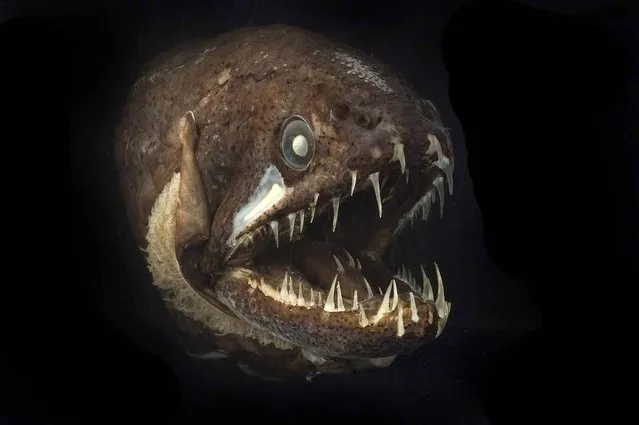
Imagine living in the sea where it is permanently dark, cold, and food is hard to find. For many animals at depth, it may be weeks to months between meals. If you find something to eat, you have to hang on to it. This is why so many deep-sea fishes have lots of big teeth. This dragonfish, spotted off the coast of Australia, even has teeth on its tongue. They would be terrifying animals ... if they weren’t the size of a banana. (Photo by Julian Finn/Museum Victoria)
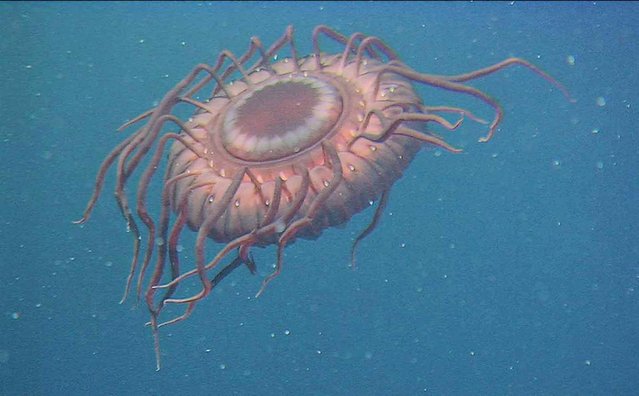
When attacked by a predator, this deep-sea jellyfish (Atolla wyvillei) uses bioluminescence to “scream” for help. The amazing light show is known as a burglar alarm display. This jellyfish was photographed by the ROV Hyper Dolphin east of Japan's Izu-Oshima Island, 2,640 feet (805 meters) below the surface. (Photo by JAMSTEC)
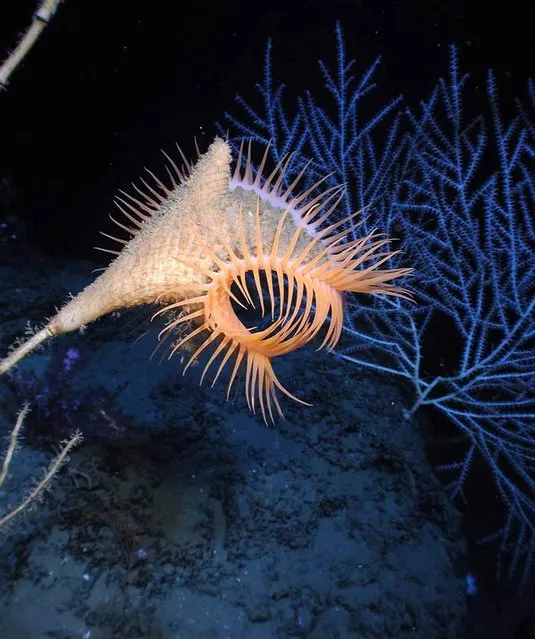
This is a Venus flytrap sea anemone (Actinoscyphia sp.) from the Gulf of Mexico. Its common name includes references to two terrestrial plants (“Venus flytrap” and “anemone”), but the species is classified as a type of polyp. It closes its tentacles to capture prey or protect itself. (Photo by I. MacDonald, D.L. Felder and D.K. Camp)
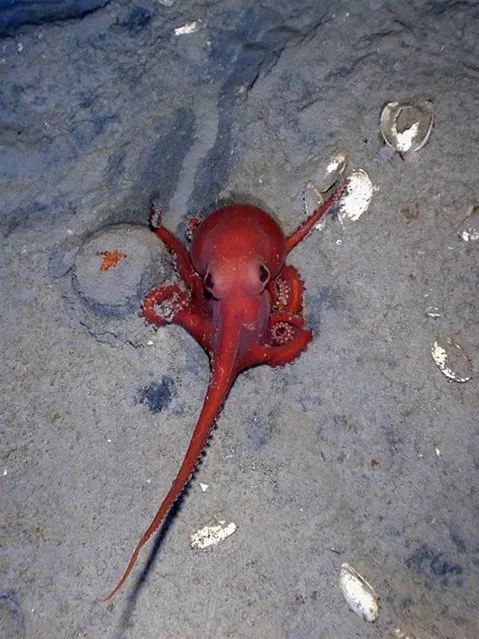
A deep-water octopus (Benthoctopus sp.) sits on the seafloo in the Gulf of Mexico's Alaminos Canyon, about 8800 feet (2700 meters) beneath the sea surface. (Photo by I. MacDonald, D.L. Felder and D.K. Camp)
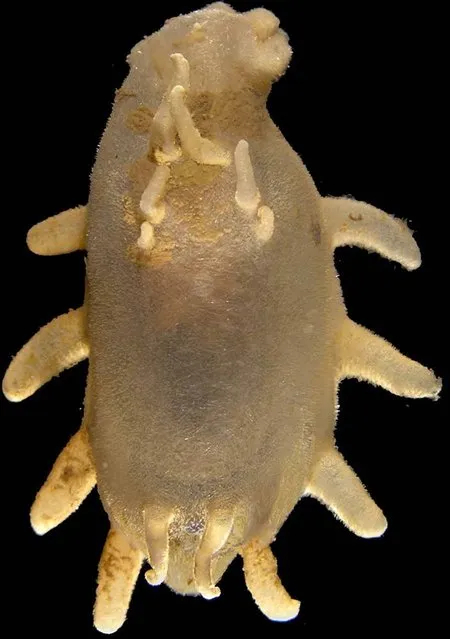
Kooky cucumber. This newly discovered sea cucumber species, Elpidia belyaevi, was first found in the Arctic deep sea. (Photo by Antonina Rogacheva)
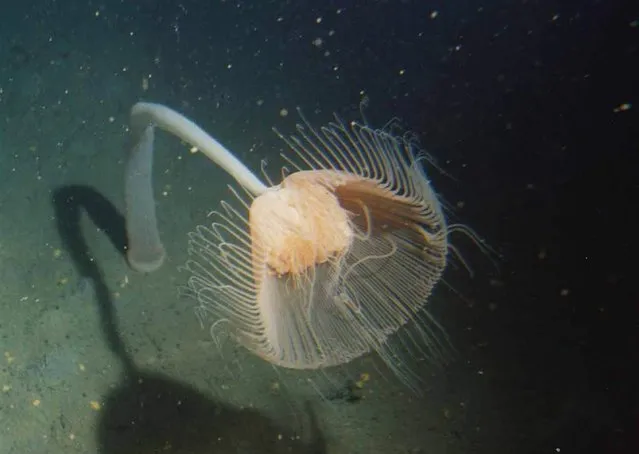
Branchiocerianthus imperator is the largest known type of solitary hydroid. Hydroids look like flowers, but they're actually animals with tentacles. This one was spotted by the HOV Shinkai 2000 in Japan's Sagami Bay at a depth of 2,200 feet (670 meters). (Photo by JAMSTEC)
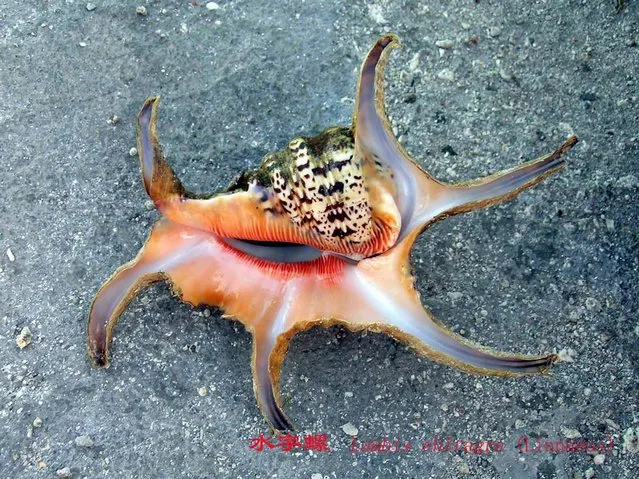
The spider conch (Lambis chiragra) has six spines on the lip of its shell. The shell's pearly interior displays beautiful tints of orange and yellow. The species is listed as “vulnerable” on the Red List of threatened animals of Singapore. (Photo by Shaoqing Wang)
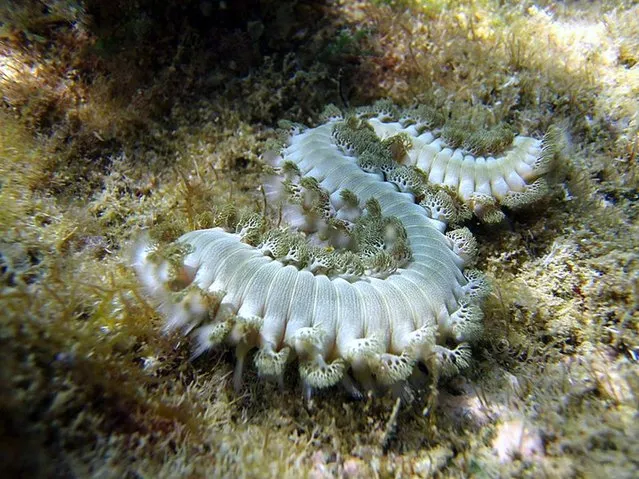
The bearded fireworm (Hermodice carunculata) is a type of bristleworm, with groups of white bristles along each side. The venom-filled bristles easily penetrate the flesh and break off if this worm is handled. They produce an intense burning sensation in the area of contact, hence the common name of the Caribbean species. (Photo by Eduardo Klein)
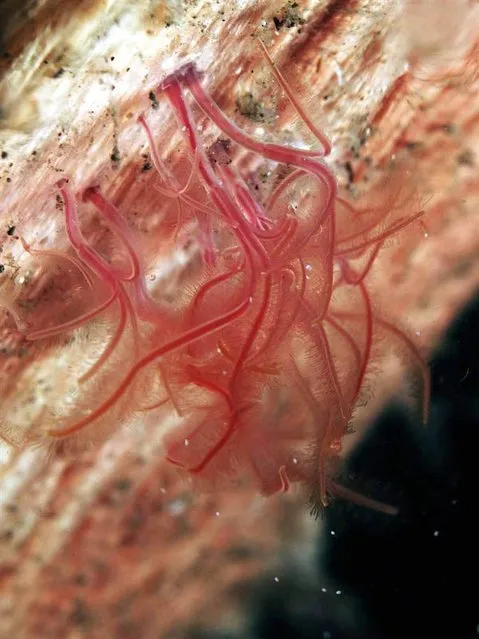
Osedax worms, more commonly known as boneworms, consume bones on the seafloor. The reddish feathery plumes act as gills. All Osedax males are dwarfs and live on the trunks of females. (Photo by Yoshihiro Fujiwara/JAMSTEC)
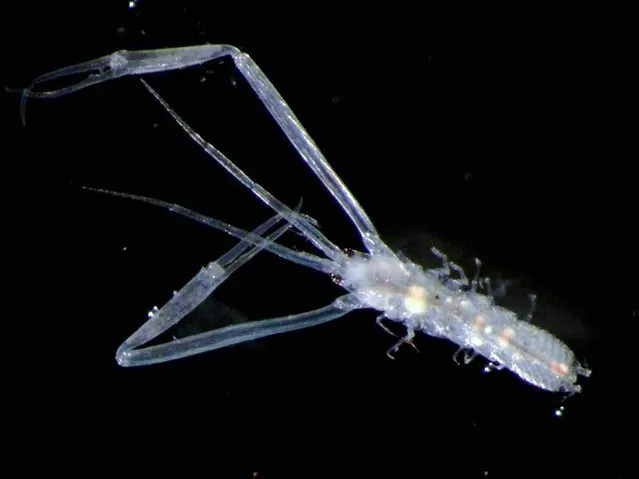
The males of Leptocheliidae have legs that are larger than those of the females, in some cases significantly exceeding the body length. While the legs are normally held folded, they are extended fully forward during swimming. The extremely slender legs found in the Leptochelia minuta group are unlikely to be capable of any feeding or locomotory function. This specimen was collected from the waters off Australia's Lizard Island. (Photo by Magda Blazewicz-Paszkowycz)

This red-lined paper bubble (Hydatinidae gen. sp.) was discovered in a sperm whale carcass in the Kagoshima whale fall, off Japan's Cape Nomamisaki. The gastropod's tiny eyes are protected by cephalic shields. The “paper bubble” is actually an extremely thin shell. (Photo by Yoshihiro Fujiwara/JAMSTEC)
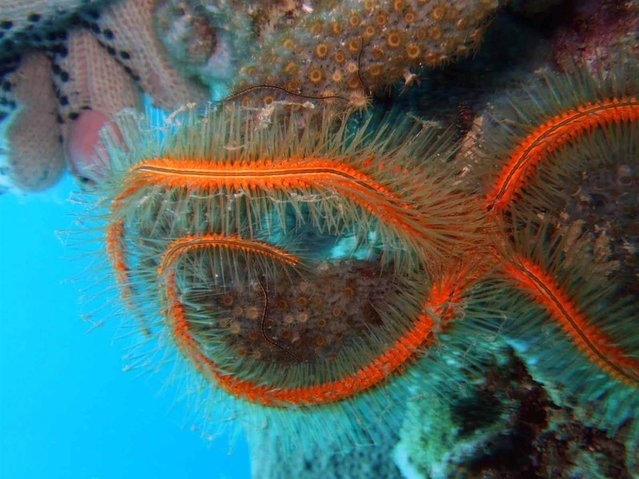
These nocturnal echinoderms (Ophiothrix suesonii) are called sponge brittle stars. They are very common in the Caribbean. They are so named because they are found exclusively either inside or outside living sponges. (Photo by César Herrera)
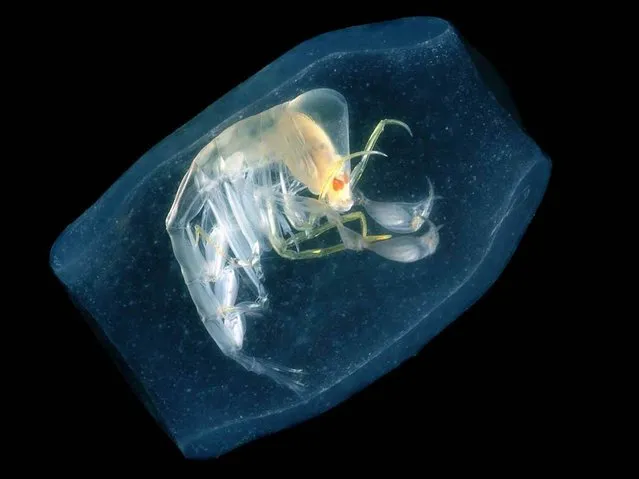
This Gulf of Mexico amphipod, Phronoma sedentaria, is known as the “Cooper of the Sea” because the crustacean species lives inside a barrel-shaped creature known as a salp, also shown here. (Photo by H. Bahena/I. MacDonald, D.L. Felder and D.K. Camp)
21 May 2012 12:14:00,
post received
0 comments
